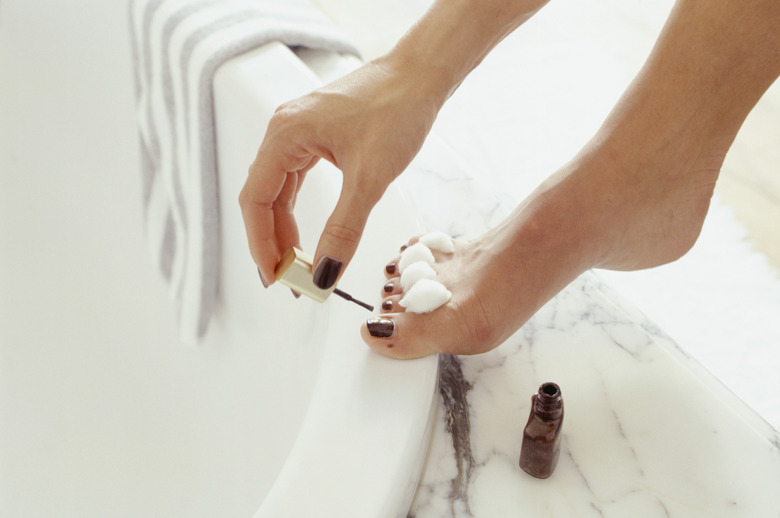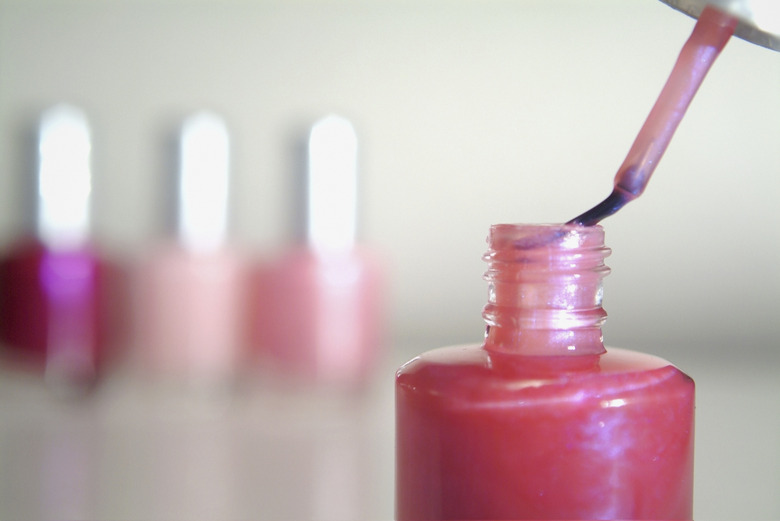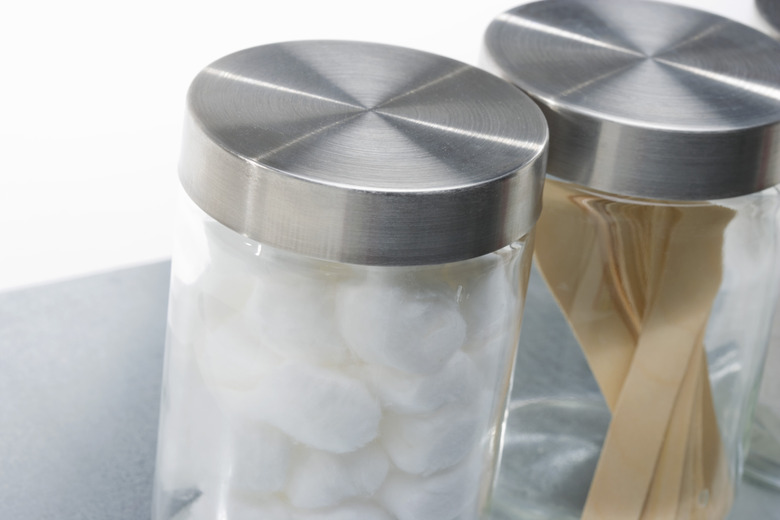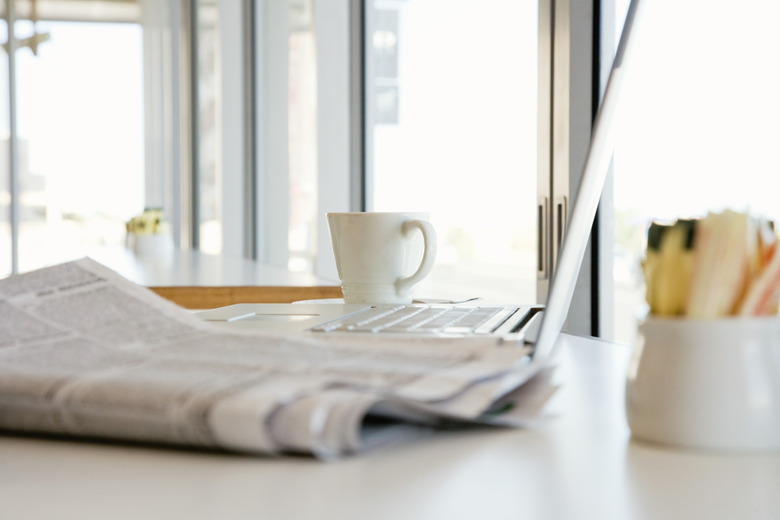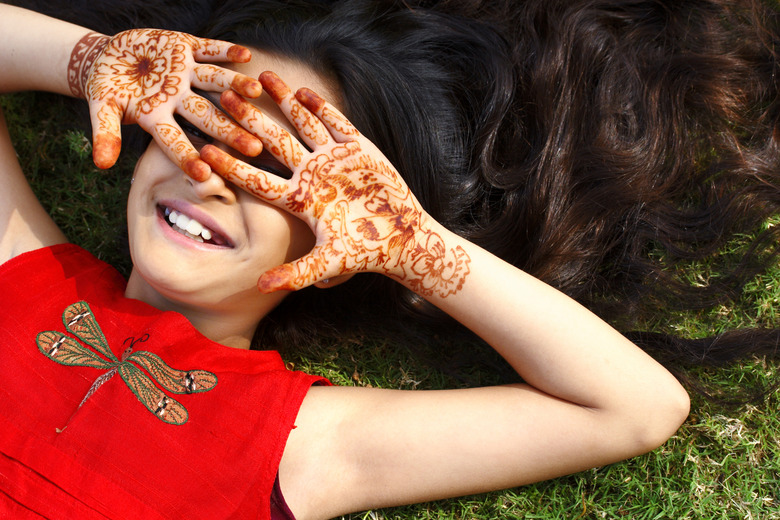Science Fair Projects Involving Nail Polish
Nail polish is used for making your fingernails and toenails more attractive and pleasing to the eyes. While some of the chemicals in most nail polish brands are toxic, such as the plasticiser dibutyl phthalate and the solvent toluene, you can still show, through a series of science and chemistry experiments, what the solution does when mixed with other nail polishes, and how it reacts to water and other materials. You can also demonstrate how others can make their own natural nail polish.
Make Your Own Colors
Make Your Own Colors
Perhaps the simplest way to find a desirable color is to mix and match. Since nail polish is very bonding to most materials out of the bottle, it's important to find a suitable palette to work from. Aluminum foil contains chemicals that have a high resistance to organic properties. At a science fair, you can arrange a row of foils containing the three main colors of red, blue and green, then using a brush from each one, drop a combination of drops onto a new strip of foil for the color your test subject wants. Record the number of drops of each color that were needed so they'll know how to do it themselves.
Marble Colored Nails
Marble Colored Nails
A dazzling, eye-catching method for coloring nails for a science fair is to give them a marble effect, where multiple colors mesh. For the water marble experiment you need nail base, some top-coat polish, nail polish remover, cotton swabs, a wooden skewer, a completely full glass of warm water, and new, unopened nail polish. This should be done away from any moving air, such as from fans, to avoid quick-drying. First, apply nail base to a fingernail you want to decorate. Add a few drops of polish to the water, and you'll notice that the color floats. This is because nail polish contains a petroleum base. As each color spreads on top of the water, put drops of other colors inside each spreading drop. Using the skewer, carefully drag the color drops around from edge to edge of the drops, until the drops create an interesting pattern and start to break away from each other. Since nail-polish dries quickly, it's important to work fast before the drops harden and sink. Submerge the finger that has nail base on it into the water and swirl it around a bit, allowing the color to stick. You'll see the effect from the water actually appear on the fingernail. Clean around the nail with cotton swabs dipped in nail polish remover, and finish off the design with top-coat polish to complete the look.
Read the Nails
Read the Nails
You can demonstrate another adhering effect with nail polish by showing how newspaper can bond to the nail. You'll need a light-colored nail polish for the best results, along with rubbing alcohol and some small strips of newspaper. Once the fingernail you are demonstrating on have a few coats of nail polish and have dried, dip just the nail into rubbing alcohol for about 10 to 15 seconds. Quickly take a small strip of newspaper, press it firmly onto the nail, then roll the nail slowly away from it. You'll see the print from the newspaper appear on the nail. This happens because of the toluene present in the polish. Toluene can be found in many paints, glues, and polishes, and adds adherence properties on the surfaces to which they are applied.
Make Your Own Nail Polish
Make Your Own Nail Polish
For a fun science experiment, and to take your audience back to ancient Egyptian times, you can show them how to create non-toxic, all-natural nail polish of their own, using just cold-pressed olive oil, powdered white clay, and henna dye. Long ago, the henna plant's stem and leaves were ground up and made into a paste as a paint for the skin. Mix one teaspoon of olive oil to 1/2 teaspoon of white clay to form the paste, then slowly add a 1/2 teaspoon of henna dye and mix together. Once applied to the nails, allow them to dry for about an hour.
Cite This Article
MLA
Bogas, Paula. "Science Fair Projects Involving Nail Polish" sciencing.com, https://www.sciencing.com/science-fair-projects-involving-nail-polish-12751046/. 9 December 2011.
APA
Bogas, Paula. (2011, December 9). Science Fair Projects Involving Nail Polish. sciencing.com. Retrieved from https://www.sciencing.com/science-fair-projects-involving-nail-polish-12751046/
Chicago
Bogas, Paula. Science Fair Projects Involving Nail Polish last modified August 30, 2022. https://www.sciencing.com/science-fair-projects-involving-nail-polish-12751046/
